All Tea originates from the leaves and buds of the Camellia Sinensis Plant. Grown in the warmer and higher climates in the world. Ideally in soft, rich, deep soil where the plant thrives best.
So what are the four basic types of Tea? The four main types of Tea are Black tea, Green tea, Oolong tea, and White tea. With subclasses of Pu’erh and yellow tea. Processing determines tea classification. An array of derivatives during and after processing means tea has up to 1500 varieties
Herbal teas and Tisanes are not from the Camellia Sinensis plant and so are not strictly Tea. Let’s look at the main four…
The Four Basic Types of Tea
- Black
- Green
- Oolong
- White
- (Pu’erh)
The Camellia Sinensis plant is evergreen, so it grows all year round and is subjected to constant harvesting. All four types of tea begin life at this harvesting point. Including Pu’erh which actually begins its life pretty much as Green Tea or even white tea.
Harvesting after each new flush of growth mostly involves gently removing the newly sprouting two leaves around the new shoots of the plant, along with the bud – which is largely still closed. The size and quality of the leaf matter greatly in how it’s processed beyond harvesting.
Processing is not actually a fair word for how the leaves are treated. Since much of it involves simple oxidization either in the sun or in artificial heat and also just processes that involve changing the shape of the leaves by crushing, tearing, and rolling them to break down the cells. Thus releasing their key ingredients.
From this point on this is really where we see the variations begin to occur. Processing involves a number of steps, how many of these steps and whether they’re subjected to it once or a number of times, or at all, depends on which of the four types of Tea you’re trying to produce.
Tea Production
I go into a bit more detail about this in my Tea Sommelier Course. It’s not the most exciting aspect of tea in my view, but you should still know it if you want to improve your tea knowledge, or if you want to become a tea drinker. There are five main processes that are involved in creating the four types of Tea, designed to arrive at the perfect product for steeping to your taste.
- Plucking – harvesting the newly formed leaves and buds.
- Withering – the leaves are left in the sun, or heated up in order to wilt and soften them. This can also include a Heating part of the process to stop oxidization.
- Rolling – light or heavy rolling, depending on the type of tea shape required to rupture the cell walls
- Oxidization – after breaking the cell walls (also known as Fermentation) exposing them to oxygen helps to release the crucial chemicals. This is a very important step.
- Firing – a final drying out of the leaves or ‘rolled’ fragments.
See our more in-depth article on ‘How Tea is Made‘
As we mentioned, the Four basic types of tea are Black, Green, Oolong, and White – oh and Pu’erh. Next, we dive a bit deeper into each one.
Black Tea
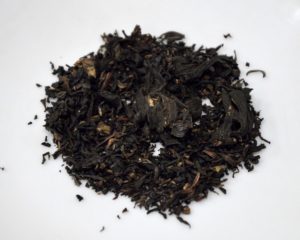
In China and surrounding areas, Black tea is translated as ‘Red Tea’. It’s not necessarily black in color, it ranges from a dark brown/Tan color to a brick color red. The West knows it as black tea after it’s been given the full oxidization process.
Black tea is by far the most popular throughout most western cultures, over 90% of the tea consumed is Black Tea.
It’s most often used in Tea Bags too for the ‘convenience culture and also in most forms of Iced Tea.
It’s traveled well and traded better as Black Tea retains its flavor for years. Longer than most other teas (except arguably Pu’erh)
It has a strong taste and a faster yield than other teas and therefore requires steeping for a shorter period of time. It comes in such varieties as Darjeeling, English Tea, and even Builders Tea – with lashings of milk and Sugar! It’s maintained its popularity even though the rise in Green Tea exploded onto the scene mainly due to its health benefits.
Black Tea is put through all five of the basic steps in one day of processing and in particular given the full treatment of withering and oxidization, far more than white, Oolong, green tea, and even yellow tea.
Green Tea
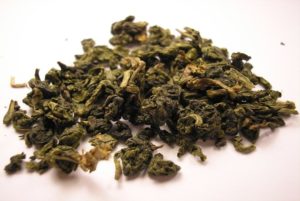
Almost the least processed Tea (after White Tea). Green Tea is also responsible for what becomes Pu’erh. Originating in China, Green Tea has now spread to much of southern Asia surrounding China.
The leaves are only really subjected to withering and then Drying to produce Green Tea.
Rolling is then done with an applied heat of around 130 degrees, this prevents the natural oxidization process from taking place. It’s also sometimes roasted to produce different variants.
Also during the rolling process, leaves are often curled instead of torn to create a variety of different shapes, each shape offering its own variety of tastes. They’re then given a final Firing and then they’re ready to go.
Due to the lack of oxidization processing, the tea retains its green color – hence the name. Green Tea typically requires longer steeping times and yields a more natural delicate fragranced taste. Providing a more natural plant fragrance – which enhances its reputation as being a healthier choice.
Because it’s more natural and less ‘controlled’ during manufacture, more of the plants’ own characteristics are retained. So other influences will show through, such as the region it’s grown in, the soil, processing methods, and the plant nurturing process all play a part.
So Green Tea offers a wide variety of tastes that reflect all these factors.
Oolong Tea
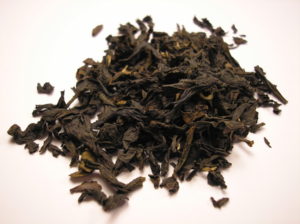
Oolong means ‘black dragon’ in Chinese. Or also called ‘dark green’ qingcha. This tea is more popular in Asia and the Far East than in the West.
Many of the varieties of Oolong have been due to specifically cultivated forms of the plant in order to produce the finer quality varieties required.
You might recognize Oolong more fully if it has distinctive ball-type curls to it, but mostly it arrives as longer curled leaves.
In terms of the process, it is withered the same as other varieties, partially oxidized before being rolled and fired.
However, as well as all the five basic steps, this variety undergoes the most processing of all as the rolling and oxidizing are done repeatedly.
The result is a plant that has undergone anywhere between 10% and 80% oxidization. So this produces a broad spectrum of tastes and colors.
Due to these numerous repeated steps of rolling and oxidization – which includes some further heat treatment too, it can often take a few days to complete each batch.
All were undertaken within stricter time controls than their Black or Green cousins. This special attention and eye on timings have been crafted to the nth degree by artisans over time. So Oolong can be more expensive than
The result is a complex layering of taste after taste and fragrance after fragrance within the leaves. Both the color and the taste of Oolong can, therefore, vary greatly. In general terms, this type sits somewhere between Black and Green on the overall scale.
sometimes it can appear sweet and floral with an earthy body. Other times it’s fruity and sweet. Or the greener versions can be more naturally fragrant.
Here are the 6 best Oolong teas to try!
White Tea
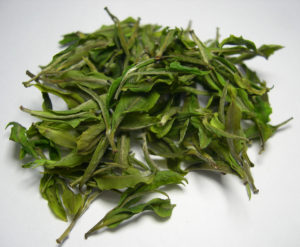
Produced historically in China but lately now also in India and down to Sri Lanka.
White Tea is the least processed of all four types of tea, using the youngest leaves.
The color is actually more yellowy, extending through to a light brown – depending on the extent of the withering.
Long withering times allow for some natural oxidization to take place which can give the leaf a slightly oxidized hue.
Picked from the youngest, almost immature parts of the plant. The processing really only involves withering, No oxidization or rolling is undertaken.
They may have some technical ‘Drying out’ assistance if the weather isn’t hot enough, but other than that White Tea arrives with you almost as it was when it was picked.
So much so, it might still have the white downy hairs from the plants’ newly opened or unopened buds. These fine silver hairs are actually what give the Tea its name. Silver Needle is the most renowned of the White Tea variety.
Considering its minimal processing, it’s actually quite rare and certainly more expensive than the other teas. The taste is light, delicate, natural, and aromatic.
Steeping takes longer than other types of tea and it yields a greenish-to-yellow color when brewed. You can learn all about white tea here.
Plus, there is one other additional type of tea we should really give an honorary mention.
Pu’erh Tea

Pu’erh actually begins life as Green Tea, but it’s stopped earlier in the withering process.
It is then compressed into large cakes, like discs – called qi zi bing cha in Chinese, or left in their loose-leaf form – depending on their eventual use.
Pu’erh is not packaged in the same way as the other types of Tea and certainly not added to tea bags! In fact, they are very much left to the elements with just some basic packaging to protect them during storage and beyond.
These Pu’erh cakes are then aged, much like fine wines, they’re placed in special storage and allowed to ferment (more so than oxidize) slowly over some months or even years to reach maturity.
Pu’erh can range from a green ‘Ripe’ color right through to a ‘Raw’ cocoa brown color.
Each time some of the outer layers are peeled off and used it reveals another layer of the tea underneath ready to oxidize that bit more and provide a deeper level of taste.
Tastes are often earthy and woody in nature. The really old ones can have a musty aroma to them like they’ve been in your Grandmother’s attic for eighty years, but yield a very smooth, creamy, and rich flavor.
We hope this article has helped to describe the 4 types of tea and the Types of tea Flavours sufficiently enough for you. Be sure to let us know your thoughts and preferences with any comments below.
Interested in learning more about tea? Elevate your tea skills … without taking formal examinations with my Tea Sommelier Course…
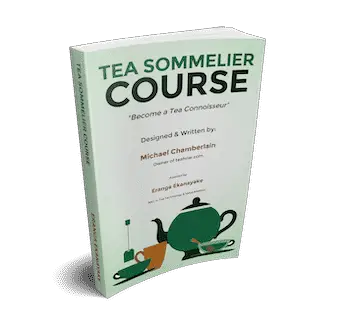
Take the fast track and become a tea connoisseur
Whether for enjoyment or considering a career as a tea sommelier. This course has everything you need to enhance your tea knowledge and tea-tasting skills.
This course keeps it simple with step-by-step tea tasting and easy reference guides
For pleasure, or as a precursor to a career in the tea industry. Find out what tea sommelier actually does, their career paths, and what they earn.

Find out more about the Teahow Tea Sommelier Course!
